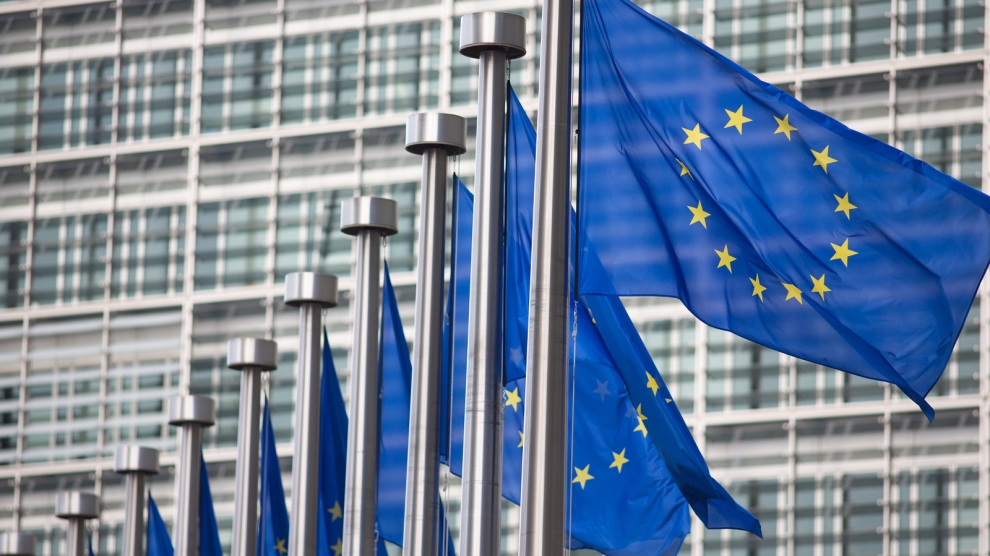The European Parliament’s latest proposal to formalize a regional carbon market including a Carbon Border Adjustment Mechanism import control risks hitting the EU steel and aluminum sectors’ competitiveness and undermining their decarbonization efforts, industry representatives said June 23.
The EP June 22 agreed on its position on proposed reforms to the EU Emissions Trading System, clearing the way for negotiations with member states and the European Commission on CBAM. The proposed EU ETS reforms aim to cut regional greenhouse gas emissions by at least 55% by 2030 from a 1990 baseline, also called the “Fit for 55” target.
The vote in Brussels cleared a major hurdle in the process for the draft reforms to pass into law after the EP had previously rejected the proposals in a vote in Strasbourg June 8.
‘Next steps crucial’ for steel, aluminum
The “next steps are crucial to make ETS and CBAM fit for the green steel transition,” cautioned Eurofer, the European Steelmakers’ Association.
“From the EP side that was the final step. From the EU Council side, next Tuesday there will be the Environment Council meeting with the EU27 ministers, who will have to agree on a final position on the Fit for 55 files,” a Eurofer spokesperson said in a June 23 email. “Following that, most likely in September, trilogues will start to find the final compromise between the three EU institutions’ positions (Parliament, Council, Commission). The negotiations will be led by the incoming Czech presidency of the EU. The outcome of the trilogues will become the final legislative text.”
Both the EP and Council must approve the final text on CBAM for it to be adopted, said a spokesperson from aluminum producers’ association European Aluminum. “Once the final CBAM legislation is passed, in January 2023 at the earliest, the CBAM will likely start with a pilot phase, as set out in the Commission’s proposal,” the spokesperson said.
The proposal needs to be approved by a majority, usually 55% of EU member states, and legislation requires Council approval to be passed.
Alignment to steel decarbonization needed
According to Eurofer, the provisions outlined by the EP’s plenary vote June 22 still need to be aligned with the deployment of the EU steel industry’s ambitious low-carbon projects.
Eurofer notes that the EU steel sector is lobbying for the following inclusion in the carbon market text:
- provision for exports, to preserve a part of EU steel production worth Eur45 billion/year ($47.3 billion/year);
- a smooth phase-out of free ETS allocations and compensation of related indirect costs until the CBAM is effective;
- review of current provisions on the Market Stability Reserve;
- inclusion of ferroalloys in the list of input materials to be considered, as they significantly contribute to CO2 emissions.
In addition, “the Parliament missed the opportunity to concretely address the upstream emissions of input materials used for the production of stainless steel. Those emissions are up to seven times higher in imported products compared to EU stainless steel production,” Eurofer noted.
The EU steel industry has 60 low-carbon projects with a CO2 emissions potential abatement of 81.5 million mt/year by 2030, equal to around a 2% cut of overall EU emissions, the steelmakers’ association said.
“For the steel sector, on its path to carbon neutrality, this represents a 55% cut compared to 1990 levels, in line with the EU Fit for 55 target,” it said.
The proposal may bring emissions rise: aluminum group
European Aluminum said it was “very disappointed” by the CBAM vote, with European members of parliament opting to include indirect emissions in its proposal. This would ensure an increase in global carbon emissions from aluminum production, the association calculated.
“In the European aluminum industry, production leakage has already led to +10.3 million [mt] of CO2 in the past year,” European Aluminum stated. Since October, Europe has lost 50% of its primary aluminum production (1.1 million mt) because of record prices for electricity, which usually make up 40% of its costs, it said.
These losses have been replaced by increased production in third countries, notably China, and with new capacity being installed in countries, including India and Malaysia, where the average carbon footprint of primary aluminum production is up to three times higher than Europe, according to the association.
“The vote comes without any robust method to calculate indirect carbon costs on imports, and without [the] realization that the European electricity grid must be much closer to decarbonization before Europe can draw any benefit from CBAM on indirect emissions. European Aluminium calls for a more cautious approach to phasing in indirect emissions,” it said.
Carbon-intensive aluminum producers in third countries would benefit from the inclusion of indirect emissions in the proposal as they pay lower indirect carbon costs than European producers using green electricity because of the EU’s unique electricity market design, according to the association.
— Diana Kinch






